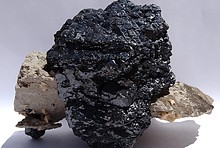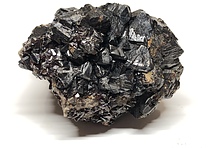Tourmaline Tales
Last Updated: 13th Feb 2011By Dave Crosby
Tourmaline Tales
It has been said that the simplest mineral is Diamond and the most complex is Tourmaline.
Some call tourmaline the "garbage mineral" because it's structure allows so many variables.
For me, this is its greatest value. It gives them so much more to tell.
Yes, they are beautiful, but they are also historic documents.
We have much to learn from these wonderful crystals if we can only learn how to read them.
What happened first, what elements were present, and how did that change over time?
Where are Tourmaline transition points?
When did this happen?
How did temperature and or pressure change over time?
What do we know?
Tourmalines form in the last stages of fumarole activity in pegmatites, filling seams and vugs.
Primary growth is along the C axis from base to top aided by pyro-electromagnetic forces.
Secondary growth is from center to exterior, often enclosing surrounding columns into a single crystal.
Color variations broadcast environment ion changes in size and or composition, Black = iron, green = vanadium, etc.
Can we answer some basic questions?
As temperature and pressure change, the forbidden zones in atoms change, making the atom larger or smaller and changing how and where it gains and loses valence electrons. Size and the positive/negative charge changes the possible crystal structures, which atoms can or cannot enter the structure, and where - c axis, a axis. b axis, or which crystal face.
Transition points occur when lattice structures become so stressed they break down into chaos, then reform into a new sustainable pattern
Drop an ice cube into a glass of warm water. Hear that click? That is low ice transitioning into high ice, causing fractures in the structure as molecules expand.
In high temperature liquid filled voids below 1790 degrees C, if SiO2 is present in large enough quantities, Cristobalite needles form often creating spheroids. Crystallization generates heat. Previous forming feldspar resumes crystallizing, or sometimes even begin melting. Cooling sets in once more and again Cristobalite needles form.
This endothermic - exothermic dance (rhythmic crystallization) continues until finally the whole melt temperature drops well below the transition point.
At 876 degrees C, another SiO2 transition point, hexagonal high quartz crystals having high termination points form. As cooling continues the radius of oxygen atoms decrease, then silicon, and the new terminations become more and more blunt.
Below 573 degrees C. The High quartz structure is no longer tenable and hexagonal trigonal trapezohedral low quartz crystals take over.
Something of a similar nature must be happening in tourmaline.
Why are some 3 sided, some 6, and some 9?
Why do the terminations vary from flat to elongated points?
Why are some in quartz while others are on quartz?
Why do some change color from inside to out while others change color from top to bottom?
Thanks Tourmaline, I'd say we still have a lot to learn from you.
Article has been viewed at least 14274 times.




















Teófilo Otoni, Minas Gerais, Brazil